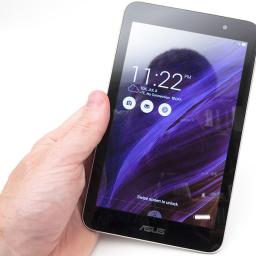Intel is paying tablet manufacturers to use its chips
 Have you seen ASUS's new $150 x86 tablet and thought to yourself: how can it possibly be so cheap?
Have you seen ASUS's new $150 x86 tablet and thought to yourself: how can it possibly be so cheap?Well here's your answer. It just may be because Intel is paying manufacturers to use its chips. That's bad news for Intel. Turns out, because Intel's Bay Trail Atom processors don't have as much functionality integrated onto the chip as the more common ARM SOCs (system on a chip), it creates a higher "bill of materials" for tablet makers. Cash-rich Intel is covering the difference in cost by simply reimbursing the manufacturers for the extra components needed. That might be a stop-gap measure to ensure Intel stays "in the game" where tablets manufacturers are concerned, but a long range strategy it is not.
In the meantime, this is a good time to scoop up a cheapo tablet!
Memo Pad ME176C: ~9 hours, 15 Wh battery
Mainly due to Intel's lithography advantage. Bay trail at 22 nm vs Apple A5 at 32 nm